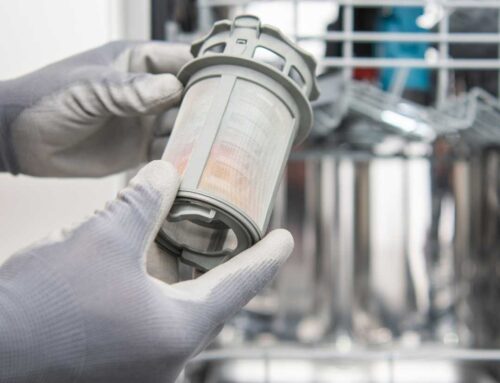Believe it or not, there actually are right ways and wrong ways to clean your home. According to BobVila.com, these are the 15 most common cleaning mistakes that many people make.
Using Furniture Polish to Dust
We’re not saying you can never use furniture polish, but if that is your go-to for dusting, you may actually be creating a bigger mess. Most commercial furniture polish has a large percentage of oil in it, which can smear and make fingerprints more prominent. For general cleaning, a cloth barely damp with water will work well.
Scrubbing Stains Out of Carpet and Upholstery
When you spill something on your carpet or upholstery, your first instinct may be to scrub to try and get it out, but that is the opposite of what you want to do. Scrubbing can spread the stain, set it into the carpet, or damage the pile. Instead, blot as much of the spill up as you can with a clean, dry towel. Then, rinse it thoroughly with clean water, and blot dry again. If it is a stubborn stain, you may want to use a carpet stain remover, but follow instructions carefully and test it in a less visible area, such as a closet, first.
Washing Windows on a Sunny Day
Hot sun beating on a window will make your glass cleaner evaporate quickly and cause streaking. For the best results, clean windows on a cloudy day when temperatures are under 70 degrees.
Using Spray Cleaners on Electronics
While it may be tempting to grab glass cleaner to clean TVs, cell phones, or LCD screens, the reality is household cleaners are not made to clean electronics. Using these products can damage your electronic devices, as can wood fibers in paper towels and tissues. Instead, use a microfiber cloth to clean off screens. If you really need more than just the cloth, rubbing alcohol is your best option, but be sure to spray it onto the cloth, not directly on the electronics.
Mixing Ammonia and Bleach
Mixing any cleaning products is a bad idea, but that is especially true with ammonia-based and bleach-based products. When ammonia and bleach mix together, they create a toxic gas that can be deadly. Read labels carefully before using different cleaners at the same time to ensure you are not mixing ammonia and bleach. If you or someone in your home is exposed to toxic fumes from mixing ammonia and bleach, leave the area immediately and call 911.
Using Abrasives on Tub and Tile
While abrasives are great on removing stubborn dirt, they can also dull the finish on you tub or tile, so avoid abrasives when cleaning these areas. Opt for a soft cloth and non-abrasive cleaner or non-abrasive powder.
Mopping a Wood Floor with Water
Water and wood do not mix, no matter the situation. Using a mop and bucket to clean your wood or laminate floor can damage the floor, including causing warping. Plus, it’s really not necessary. If you sweep or vacuum regularly and mop with a barely-damp cloth, you will keep your floors looking great.
Vacuuming the Wrong Direction
OK, so there’s not really a wrong way to vacuum, but there is a was to do so for a better clean. If you vacuum perpendicular to the baseboards, you will push dirt under the baseboard that will likely stay stuck there. Instead, it is better to vacuum parallel to the baseboards at the edges of the room, then vary the direction in the middle. This will help left, separate, and untangle fibers.
Not Letting the Toilet Brush Dry Out
Do you immediately put your toilet brush back in its stand after cleaning? Have you ever noticed that stand can get really disgusting? That’s because the water that remains on that brush after cleaning allows all sorts of bacteria to grow. Avoid it by resting the brush across the seat so it can dry out, then put it in the stand.
Using Paper Towels to Clean Mirrors
If you’ve ever needed to clean up liquid that has spilled on a countertop, you know that peer towels are super absorbent. Great for cleaning up spills, but not so great for cleaning mirrors. The super absorbent fibers will leave behind a streaky mess. For a better, streak-free clean, use a microfiber cleaning cloth instead.
Using Vinegar as a Disinfectant
Vinegar has been used for cleaning for many years and for good reason. It cuts grease and is effective on some bacterias. However, it is not a good substitute for disinfectant. If you need to get rid of flu, COVID, or other virus germs, get an actual disinfectant.
Not Cleaning Your Vacuum
If you want your vacuum to work properly, you need to empty and clean it regularly. A full vacuum will not provide enough suction to effectively clean carpets, and you will end up pushing dirt further into the carpet. While emptying the vacuum, check hoses for obstructions, and clean hair and other debris from brushes.
Cleaning Floors First
When you clean, dirt and dust is going to fall to surfaces below the one you are cleaning at that moment. Therefore, if you clean floors first, you are just going to negate it when you start dusting or wiping things down. When you clean rooms, work from the top down, ending with floors.
Using the Same Sponge
It’s no secret that sponges are breeding grounds for bacteria and germs, so if you use the same sponge to clean multiple areas, you will just spread the bacteria and germs around. If you want to use a sponge for cleaning, make sure you are using a fresh, clean one each time.
Using a Feather Duster
Feather dusters look great, but they are largely ineffective at dusting properly. In most cases, you will just spread dust from one surface to another. A lightly damp cotton rag or microfiber cloth will grab and hold dust particles.
Looking for your dream home? Liberty Homes has been building new homes in Utah for nearly 30 years. We take pride in our trade, crafting each home as if it were our own. Our quality, affordable homes are energy smart and thoughtfully personalized for your active Utah lifestyle. We currently have townhomes available in Salt Lake County and single-family homes in Heber City. Plus, 55-plus single-family homes coming soon in West Jordan. Contact us today to find your dream home.

Want home decorating and maintenance tips, craft ideas, recipes, and more delivered right to your inbox?
Sign up for our monthly newsletter:




